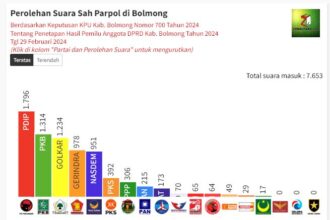ZONAUTARA.com – Health Insurance Open Enrollment is a critical period for individuals and families to review and choose the best health insurance plan for their needs. This comprehensive guide will provide you with essential information on open enrollment periods, policy options, and the resources available to help you make the best decision for your health insurance coverage.
Understanding health insurance open enrollment
Open enrollment is the annual period during which individuals and families can enroll in a new health insurance plan, change their existing plan, or add or remove dependents from their policy. It is essential to understand the open enrollment period and its implications, as missing it may result in limited health insurance options or even a lack of coverage.
The open enrollment period usually lasts for a few weeks, with specific dates varying depending on your location and the type of plan you are considering. For instance, the open enrollment for the Affordable Care Act (ACA) Marketplace typically occurs from November 1st to December 15th, while employer-sponsored health insurance plans may have different open enrollment dates.
It is crucial to mark your calendar and stay informed about the open enrollment period to avoid missing the deadline and to ensure that you have adequate time to review and select the best health insurance plan for your needs.
Policy options to consider
When it comes to health insurance, one size does not fit all. There are several types of plans to consider during the open enrollment period, including:
- Health Maintenance Organization (HMO): HMO plans require you to select a primary care physician (PCP) who will coordinate your healthcare services. These plans often have lower premiums and out-of-pocket costs but may limit your choice of healthcare providers.
- Preferred Provider Organization (PPO): PPO plans offer more flexibility in choosing healthcare providers, allowing you to see specialists without a referral. However, these plans often have higher premiums and out-of-pocket costs compared to HMOs.
- Exclusive Provider Organization (EPO): EPO plans combine some aspects of both HMO and PPO plans. You have a network of providers to choose from, but you may not have coverage for out-of-network care unless it is an emergency.
- Point of Service (POS): POS plans are a hybrid of HMO and PPO plans, requiring a PCP but offering more flexibility in seeing out-of-network providers. These plans typically have higher out-of-pocket costs than HMOs but lower than PPOs.
- High Deductible Health Plans (HDHP): HDHPs feature lower premiums and higher deductibles than traditional plans. They are often combined with a Health Savings Account (HSA) to help cover out-of-pocket expenses.
Resources to help you choose the best health insurance plan
Selecting the right health insurance plan during open enrollment can be overwhelming. Thankfully, there are numerous resources available to help you make an informed decision:
1. Health Insurance Marketplace: The ACA Marketplace, also known as the “Exchange,” is a valuable resource for comparing various health insurance plans available in your area. You can access the Marketplace by visiting HealthCare.gov or your state’s specific exchange website.
2. State Departments of Insurance: Your state’s Department of Insurance can provide information on insurance regulations, consumer complaints, and other helpful resources for selecting the best health insurance plan.
3. Insurance Brokers and Agents: Licensed insurance brokers and agents can help you navigate the complexities of health insurance, assisting you in finding a plan that fits your needs and budget.
4. Employer-Sponsored Health Insurance: If you have access to employer-sponsored health insurance, your Human Resources department can provide information on available plans, benefits, and enrollment procedures.
5. Nonprofit Organizations and Community Health Centers: Many nonprofit organizations and community health centers offer free or low-cost assistance in understanding and selecting health insurance plans. They can provide unbiased advice and support during the open enrollment period.
6. Online Comparison Tools: Several websites offer tools to compare different health insurance plans based on factors such as premiums, deductibles, and coverage. These tools can help you make an informed decision by providing side-by-side comparisons of your available options.
7. Friends and Family: Consult with friends and family members who have experience navigating the health insurance market. They may have valuable insights and recommendations based on their personal experiences.
Factors to consider when choosing a health insurance plan
During the health insurance open enrollment period, it is essential to weigh various factors to ensure you choose the best plan for your needs. Some critical factors to consider include:
1. Premiums: The monthly cost of your health insurance plan is an important consideration. Ensure that the premiums are affordable and fit within your budget.
2. Deductibles and Out-of-Pocket Costs: Evaluate the deductibles, co-pays, and coinsurance associated with each plan. Consider how these costs may affect your overall healthcare expenses.
3. Provider Network: Review the provider networks associated with each plan to ensure that your preferred doctors and hospitals are included. This is especially important if you have an existing relationship with a healthcare provider or if you require specialized care.
4. Prescription Drug Coverage: Verify that your medications are covered under the plan’s formulary and review any associated out-of-pocket costs.
5. Quality Ratings: Research the quality ratings of the insurance providers and their plans. These ratings can provide valuable information on customer satisfaction, access to care, and the effectiveness of care provided.
6. Additional Benefits: Some health insurance plans may offer additional benefits, such as dental or vision coverage, telemedicine services, or wellness programs. Consider whether these benefits are important to you and your family.
In Conclusion
Health Insurance Open Enrollment is a crucial time to review your healthcare needs and explore your insurance options. By understanding the open enrollment period, assessing the different policy options, and utilizing the available resources, you can make an informed decision and choose the best health insurance plan for you and your family.
Remember to consider factors such as premiums, deductibles, provider networks, and additional benefits when selecting a plan. With careful planning and research, you can ensure that you have the health insurance coverage you need to maintain your well-being and financial security.


















